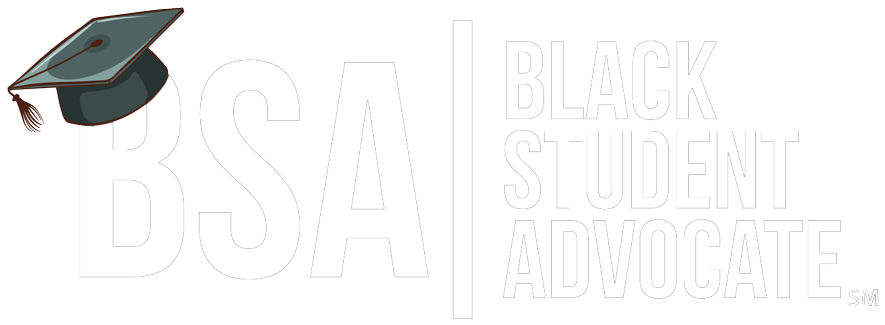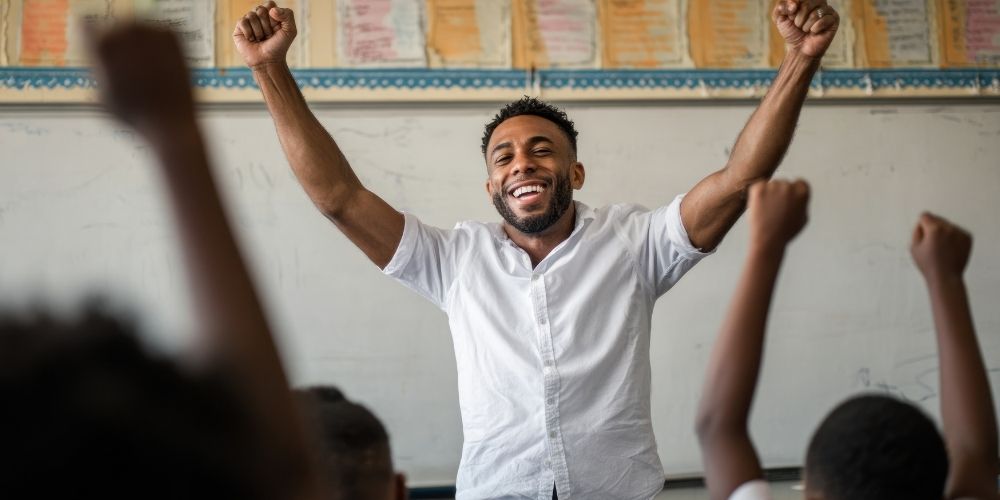Education is one of the most powerful tools for change — yet, it is also a reflection of society’s deepest inequalities. For white teachers and Black students, this dynamic often exists within an unspoken cultural divide. Many white educators enter classrooms in predominantly Black communities with genuine compassion and the desire to make a difference. However, good intentions alone are not enough to create equitable, empowering learning spaces.
Understanding how systemic racism, implicit bias, and cultural disconnection shape classroom experiences is essential. As The Black Student Advocate Network emphasizes, true advocacy begins not with speaking, but with listening. Empowering Black students requires white teachers to step back, learn, and lead through humility, awareness, and action.
This guide explores how white educators can move beyond performative allyship to become authentic advocates — fostering classrooms where Black students are seen, heard, and valued. Drawing from real experiences and social research, we’ll explore six essential lessons for building trust, equity, and empowerment in today’s classrooms.
1. Begin with Listening: Understanding the Lived Experiences of Black Students
The first and most powerful step white teachers can take is to listen — deeply, intentionally, and without defensiveness. Too often, teachers approach diverse classrooms assuming their educational methods are “neutral” or “universal.” But education is never neutral; it reflects the history, culture, and power structures of those who designed it.
For white teachers and Black students, this means recognizing that many Black children experience school as a place of misunderstanding, underestimation, and microaggression. Listening allows teachers to confront this reality and begin dismantling barriers.
Practical Steps:
- Hold informal conversations with students about their experiences in school — what makes them feel respected, and what makes them feel unseen.
- Attend community events, churches, and neighborhood gatherings to understand students’ cultural and social environments.
- Read books, watch documentaries, and engage with podcasts created by Black educators and thinkers (such as Bettina Love, Gloria Ladson-Billings, and Dr. Christopher Emdin).
Listening is not passive — it’s active empathy in action. By hearing students’ stories, white teachers can begin to unlearn assumptions and build authentic connections rooted in understanding.
Quote to Reflect On:
“When we listen to Black students, we aren’t giving them a voice — we’re recognizing that they’ve had one all along.” – The Black Student Advocate Network
2. Unlearning Bias: Confronting Privilege and Prejudice in the Classroom
Before a white teacher can lead Black students effectively, they must acknowledge and unlearn their own biases. Implicit biases — the unconscious attitudes we hold — influence how teachers interpret behavior, grade work, and enforce discipline.
For example, studies consistently show that Black students, especially boys, are disciplined more harshly for the same behaviors as their white peers. These patterns stem from subconscious stereotypes that label Black children as “disruptive” or “aggressive.”
Self-Reflection Questions for Teachers:
- Do I interpret assertiveness from a Black student as disrespect?
- When a Black student struggles academically, do I attribute it to effort or systemic inequity?
- Do I lower expectations, believing I’m being “understanding”?
These reflections help dismantle bias at its roots.
Actionable Steps:
- Take the Harvard Implicit Association Test (IAT) to uncover hidden racial biases.
- Join anti-racism workshops specifically for educators.
- Partner with a mentor or accountability group that encourages ongoing reflection.
Bias doesn’t disappear overnight — it requires commitment. But every effort made to unlearn bias makes a tangible difference in the lives of Black students.
At The Black Student Advocate Network, we remind educators that confronting bias isn’t about guilt — it’s about growth and responsibility.
3. Centering Cultural Relevance: Teaching Through Representation and Identity
Culturally relevant teaching means designing curriculum and instruction that reflect the experiences, histories, and identities of students. For white teachers and Black students, this approach bridges the gap between academic learning and cultural pride.
When Black students see their culture represented positively in the classroom — through literature, history, art, and science — it affirms their identity and strengthens engagement.
Examples of Culturally Responsive Practices:
- Curriculum Representation: Include texts by Black authors, not only during Black History Month but year-round. Teach about Black scientists, inventors, and activists alongside their mainstream counterparts.
- Cultural Connection: Encourage discussions about current events that impact Black communities, helping students critically analyze media, policy, and justice.
- Affirmation of Identity: Celebrate language diversity and code-switching. Recognize African American Vernacular English (AAVE) as a legitimate dialect, not “broken English.”
A classroom that validates culture also validates humanity. When students feel seen, they engage more deeply — not just in learning, but in believing they belong.
Reflection from The Black Student Advocate Network:
“Representation is more than inclusion — it’s liberation. When white teachers center Black excellence, they help students reclaim narratives that history has tried to silence.”
4. Building Trust: Relationships Before Rules
Many white teachers step into classrooms in Black communities and lead with structure, discipline, and authority — often before establishing trust. But for meaningful education to happen, relationships must come before rules.
Black students, like all students, need to know their teachers care about them as people first. This means showing up consistently, respecting individuality, and creating space for vulnerability.
Ways to Build Trust:
- Be Present: Attend school events and games, learn students’ interests, and greet them warmly each day.
- Be Accountable: If a student calls out a racist or insensitive remark, listen, apologize, and make changes.
- Be Supportive: Advocate for students facing unfair disciplinary action or systemic barriers.
Trust cannot be demanded — it must be earned through authenticity and reliability.
A powerful example comes from a white teacher who, after years in a Black community, realized that showing vulnerability was her greatest strength. When she admitted mistakes and learned from students, she earned their respect. It’s not about perfection — it’s about partnership.
As The Black Student Advocate Network teaches:
“Black students do not need saviors; they need allies who show up with humility, consistency, and heart.”
5. Amplifying Student Voice: Creating Spaces for Leadership and Expression
Empowerment begins when students feel ownership of their learning. For white teachers and Black students, this means shifting from teacher-centered classrooms to student-led spaces where Black voices drive dialogue, creativity, and leadership.
Strategies for Amplifying Student Voice:
- Student Choice: Allow students to select project topics that relate to their identities or communities.
- Classroom Dialogues: Facilitate open discussions about race, identity, and justice — guided with care, not fear.
- Leadership Opportunities: Encourage Black students to lead clubs, peer discussions, or community initiatives.
Teachers must also be intentional about not policing expression. Black hairstyles, clothing, and cultural expression are often unfairly judged in schools. Creating environments where individuality is respected teaches students that who they are is enough.
When white educators step back and make room for Black students to lead, they model what equitable education truly looks like — one that doesn’t just teach lessons, but also builds legacies.
Insight from The Black Student Advocate Network:
“Empowerment is not giving power; it’s recognizing that students already have it and removing the barriers that keep them from using it.”
6. Leading for Equity: From Classroom Practice to Systemic Advocacy
True leadership requires action beyond the classroom walls. Once white teachers understand the dynamics of race and power, they must use their influence to challenge inequities within the system itself.
Advocacy in Action:
- Speak Up: Challenge discriminatory policies, such as biased discipline codes or Eurocentric curricula.
- Collaborate: Partner with Black colleagues and families to co-create programs and culturally responsive initiatives.
- Use Your Privilege: Advocate for equitable funding, mental health resources, and representation in administration.
Equity is not a one-time training — it’s a lifelong commitment to justice. White teachers have access to institutional spaces that Black voices are often excluded from. Using that access to elevate student needs is the most powerful act of allyship.
When educators lead through equity, they model what real change looks like — not as heroes, but as partners in progress.
Message from The Black Student Advocate Network:
“Leadership in education is not about power over students — it’s about responsibility to students. Especially when those students have been historically silenced.”
Conclusion
The journey of white teachers and Black students is one filled with both challenge and possibility. To truly empower Black students, white educators must embrace a mindset of lifelong learning — one that prioritizes listening over lecturing, empathy over ego, and collaboration over control.
This is not easy work, but it is sacred work. It asks educators to examine themselves, challenge norms, and walk beside students in their pursuit of freedom and success.
At The Black Student Advocate Network, we believe that every teacher has the capacity to become an advocate — not by knowing all the answers, but by being brave enough to ask the right questions. When white teachers listen deeply, learn continuously, and lead courageously, they do more than teach; they help transform the future.







Share This Page